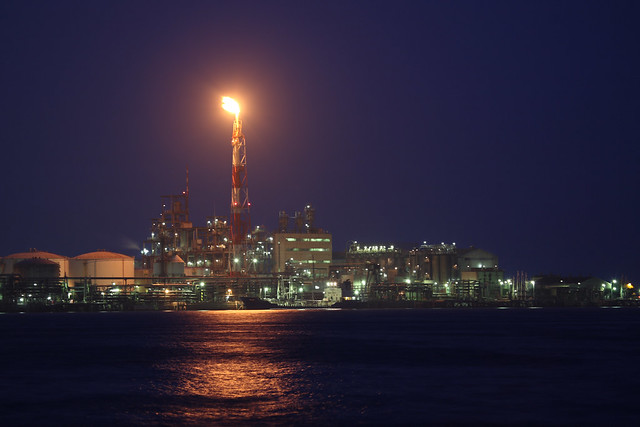What can I choose in the calculator?
Industry Energy Efficiency
 mrhayata, via Flickr, under CC BY-SA 2.0
mrhayata, via Flickr, under CC BY-SA 2.0
Contents
- Impact
- Global market
- Definition
- Constraints
- Assumptions
- Value range
- References
IMPACT – What is the impact of increasing the energy efficiency in industry?
Energy system
![]() Reduces final energy demand.
Reduces final energy demand.
![]() Likely to reduce total electricity consumption.
Likely to reduce total electricity consumption.
![]() Likely to reduce total fossil fuel consumption.
Likely to reduce total fossil fuel consumption.
![]() Likely to increase energy independence and energy security by reducing fossil imports.Likely to increase energy independence and energy security by reducing fossil imports.
Likely to increase energy independence and energy security by reducing fossil imports.Likely to increase energy independence and energy security by reducing fossil imports.
Environment & Climate
![]() Very likely to reduce global CO2 emissions.
Very likely to reduce global CO2 emissions.
![]() Focus on energy efficiency likely to also result in related resource savings as a side-effect.
Focus on energy efficiency likely to also result in related resource savings as a side-effect.
![]() May generate additional deposited waste from refurbishment activities.
May generate additional deposited waste from refurbishment activities.
Society & Economy
![]() Energy efficiency measures are often some of the most cost-effective options to reduce energy demand.
Energy efficiency measures are often some of the most cost-effective options to reduce energy demand.
![]() May improve balance of payments by reducing fossil imports.
May improve balance of payments by reducing fossil imports.
![]() May reduce Confederation income from the tax on mineral oil under the current taxation system.
May reduce Confederation income from the tax on mineral oil under the current taxation system.
GLOBAL MARKET – What is the global potential for increasing the energy efficiency in industry?
DEFINITION / CONSTRAINTS
DEFINITION - What is Industry Energy Efficiency?
This indicator reflects the way heat and electricity are used in industry. The major industrial energy demands come from process heat requirements and for electric motors that drive equipments. In 2012, about 42% of the industrial final energy demand in Switzerland was for electricity, and a further 43% was met by fossil fuels.
Industrial efficiency measures can result from process and process equipment improvements, and waste heat recovery.
CONSTRAINTS - What are the key barriers facing the increase of efficiency in industry?
• Low energy prices often make the economics of equipment or process improvements very challenging as the monetary value of the energy savings is small.
• Energy efficiency improvements would often need to be made by refurbishing existing industrial plants, which is typically less cost effective and more challenging.
The industry energy intensity is calculated assuming several parameters. The main assumptions are:
- Evolution of the energy intensity for twelve types of industry (food, clothing, paper, chemistry, etc).
- The evolution of the Swiss industry mix. It is necessary to forecast the production of each type of industry in order to be able to determine its weight in the Swiss industry production and calculate its contribution into the average energy intensity.
E.g. the paper industry had an energy intensity of 3.50 kWh/CHF [3] in 2011 and it is assumed that in 2050 it will be around 4.5 kWh/CHF [3]. In spite of the increase of the energy intensity of the paper industry, the Swiss average value is expected to be lower. This can be explained by the fact that the paper industry production will decrease, while other industries with reductions on the energy intensity will increase their production. As it is the case of the chemical industry, whose energy intensity will go from 0.48 kWh/CHF [3] (2011) to 0.2 kWh/CHF [3] (2050) and its production will be 30% [3] higher (2050 respect to 2011).
The expected future value ranger for the average industry energy intensity are:
- 2035 → 0.20 – 0.25 kWh/CHF
- 2050 → 0.15 – 0.20 kWh/CHF
In 2011 the Swiss industry energy intensity amounted to 0.34 kWh/CHF in average [3].
[1] Rocky Mountain Institute, U.S. industry energy-saving potential 2010-2050
[2] IEA 2012, World Energy Outlook 2012